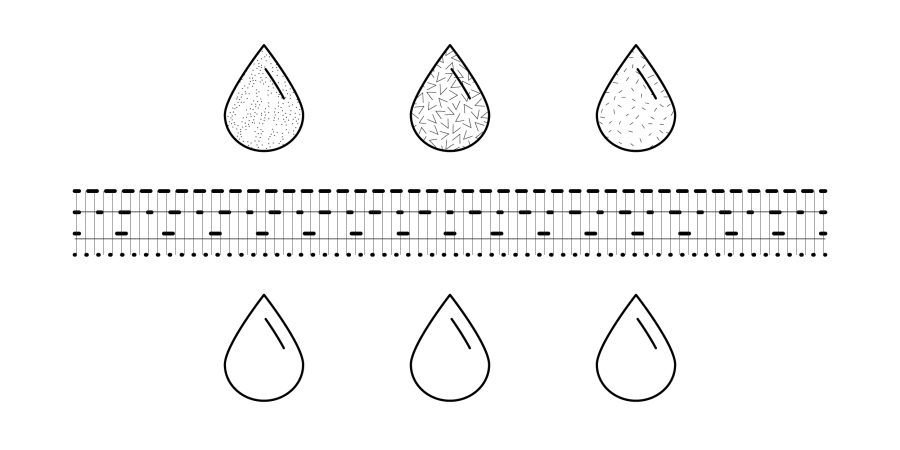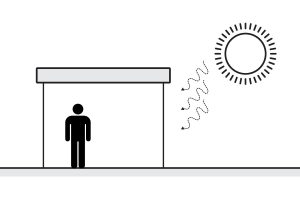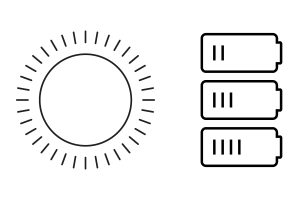Introduction
Water is the stuff of life. Healthy and safe water is critically important to the quality of life, and is something that is typically taken for granted in 1st world countries. In America, water is generally healthy in all metropolitan areas, however, there are aspects to consider for elevating the water from just healthy to optimal, such as pH level, chemistry, minerals, and others.
Misc Definitions
- Actuator: A device in a building control system that receives commands from a controller and activates a piece of equipment.
- Annual Fuel Utilization Efficiency (AFUE) The ratio of annual fuel output energy to annual input energy. This includes non seasonal pilot light input losses.
- Deadband / Dead Band: In a building control system, the range of temperatures within which neither heating nor cooling is needed.
- Ground Coupled Cooling: A method of cooling a building by direct contact with the earth or by circulating air through underground tunnels to cool it.
- Seasonal Energy Efficiency Ratio (SEER): The total cooling output of a central air conditioning system or heat pump in the cooling mode, measured in BTUs per hour, during its normal usage period for cooling divided by the total electrical input in watt-hours, as determined by specific test procedures.
- The higher the SEER, the more efficient the equipment performance. Learn more at Trane’s blog post here.
Water Factors & Issues
pH Level
pH Level is always between 0 and 14. 0-7 is acidic. While 7-14 being a base (alkaline).
- Acidic water can cause iron and steel to rust.
- Rainwater is slightly acidic in its natural state
- When rainwater becomes more acidic due to industrial in the air (nitrogen and sulfur) – the rain can fall as acid rain. Ever play SimCity?
Hardness / Softness
Hardness of water is caused by calcium and magnesium salts in water. If untreated, the hardness can cause clogged pipes and corrode boilers.
- Hardness inhibits the cleaning agents in detergents and soap. The water will ‘suds’ less with soap.
- Generally means things like dishwashers will work poorly (if the water is hard).
Turbidity:
Suspended material in water.
- Can be treated by filtering, but is not inherently toxic or dangerous. Water at a shoreline typically has high turbidity due to the sand and water at the shoreline mixing.
Color & Odor Problems:
Color and odor problems are caused by organic matter, inorganic salts, or dissolved gasses.
- Color: Corrected with fine filtration and chlorination
- Odor: Corrected by carbon filters.
Biological Contaminants:
Caused by bacteria, viruses and protozoa (all dangerous to health)
- Coliform group are some of the most common types found in water (e.coli is in this group)
- Legionella pneumophila (Legionnaires’ disease).
- Normally not a problem in drinking water, they grow in warm water such as those found in cooling towers, air condition systems, large public systems and hot tubs.
- Giardia is another protozoa that causes diarrhea – Slow sand filters can remove nearly all Giardia.
- Hundreds of other dangerous chemicals, which range from affecting only the color or taste of water, while some others can be deadly (lead).
Water Treatments & What It Does
- PreTreatment
Pretreatment is often needed before other methods can be used to their full effectiveness. Designed to remove suspended matter (turbidity) and large particles from the water.
- Sedimentation: Uses gravity and still water, allowing heavy particles to sink to the bottom. Can be used with or without the next two.
- Coagulation: Process of getting particles in the water to stick together by adding aluminum sulfate (alum) or other chemicals engineered to do so with what is suspended in the water.
- Flocculation: Process after coagulation. The mix of water particles and alum combine together forming a loose aggregated mass called floc. Where it becomes heavy enough for sedimentation to take place.
- Filtration
Filtration is when the water has the rest of its floating particles removed.
- Slow Sand Filter: Water seeps through a bed of fine sand, typically 3-4’ deep.
- Biological slime forms on the sand and it traps and degrades organic matter. Good at filtering giardia, but not good for high turbidity water.
- Direct Filtration: Passes water through a filter medium. The process includes coagulation and filtration, and may require a flocculation tank. Good to eliminate giardia and most viruses.
- Packaged Filtration: Same as direct filtration except all elements are placed in a single unit/element.
- Diatomaceous Earth Filtration: Uses a thin layer of diatomaceous earth placed on a filter element.
- Good for removing algae, cysts, asbestos, but not good for turbidity and bacteria
- Diatomaceous: Made from the fossilized remains of tiny, aquatic organisms called diatoms.
- Membrane Filter: Forces water at high pressure through a thin membrane that removes particles as well as giardia, bacteria, and other viruses and microorganisms.
- Cartridge Filtration: Uses self-contained units placed along the water supply line to filter out particles .2 um and larger. Cartridges must be replaced or cleaned as they get used.
- Demineralization
Removes dissolved solids and chemicals that cause hard water.
- Ion Exchange: Water softener treats hard water by removing cadmium, chromium silver, radium and other chemicals. Hard water is piped into the softener. Periodically the water softener medium is washed and water is dumped, and then gets recharged by a brine (salt water) solution.
- Water must be pre-treated by this point to remove all suspended solids.
- The most common water softener type you will find.
- Periodically the membrane used (resin or similar) should be replaced 3-10 years depending on use and size of system, etc.
- Reverse Osmosis (RO): Removes contaminants by using a semipermeable membrane that allows only water to pass through it and not dissolved ions. The unit is cleaned periodically by forcing water through the membrane, and then the membrane disposed of carefully.
- RO is useful for removing inorganic chemicals, bacteria, and suspended particles.
- Electrodialysis: Places charged membranes as the inflow of water passes over it and the membrane then attracts counter-ions. Can remove barium, cadmium, and fluoride.
- Expensive to purchase and operate.
- Disinfection
Destroys microorganisms that can cause disease in humans. The EPA Surface Water Treatment Rule (SWTR) requires disinfection of water supply systems that get their water either from surface water or from groundwater under the direct influence of surface water.
- Chlorination: Most common form of treatment. Kills organisms by introducing chlorine into the water stream.
- Chlorine can be in the form of liquid, gas, or solid.
- Chloramine: Similar to chlorination but a weaker disinfectant. Chloramine is typically a secondary disinfectant to prevent bacterial regrowth in a distribution system (pipes).
- Ozonation: Disinfect water through the use of ozone. Primarily used as a disinfectant, and typically requires a secondary disinfectant.
- Typically used for treatment of cooling towers to prevent legionella, scale, algae, etc.
- UV Ultraviolet: Light destroys a cells ability to reproduce and is effective against bacteria and virus growth. UV light is not effective against giardia and not useful for water with lots of turbidity as it will not penetrate deep enough for effect.
- UV needs a secondary disinfectant.
- NanoFiltration: Uses filter membranes that are capable of trapping particles as small as one nanometer. At this scale the filter can remove bacteria, viruses, pesticides, and organic material. Water is forced through at high pressure.
- Distillation and Aeration
Additional methods of water treatment.
- Distillation: Water is treated by boiling it and then condensing the vapors. This results in very clean water and is a very effective way to treat water when camping and outdoors.
- Aeration / Oxidation: Used to improve the color and taste of water. Helps remove iron and manganese by oxidizing them so that they can be easily removed by filtration.
Solar Water Heating
The sun can be harvested for heating up water. This works especially well anytime the sun is out. Even in cloud cover, the ambient temperature can help raise water temperature to reduce reliance on mechanical systems. All solar water heating systems should be paired with a mechanical system for use off-sun times and when extra heat is needed beyond the capacity of the solar heating system.
Types of Solar Water Heating
- Batch System: Heats water directly in a black painted tank inside a glazed box. Subject to nighttime heat loss and freezing.
- Thermosiphon: Relies on natural movement of heated water to recirculate itself in a passive loop.
- System must be simple and designed to reduce friction in the pipe.
- Closed-Loop Active System: Most common. A separate non-freezing liquid is circulated by pumps through the solar collectors into a heat exchanger where the water is heated. A differential controller senses when the collector is lower than the stored water and will turn the pump off.
- This system suffers some efficiency loss due to its need for a heat exchanger, and costs more to operate the pumps and exchanger.
- Drain-Down System: A direct, active system that solves the problem of freezing by automatically draining the water from the collectors when outside is near freezing.
- Water is wasted every time this occurs, so this system should only be used where freezing is infrequent (mild climates).
- Drain-Back: Indirect, active system that uses water as the heat-collected fuel. The heated water is pumped into the heat exchanger where hot water is heated. When the controller senses freezing temperatures, the system is shut down and the water drains back into the solar storage tank.
- Phase Change System: Uses a Phases Change Material (PCM) to store heat (sensible and latent) through its phase state change throughout the day. At night, it may change states again, releasing the heat it gained throughout the day.
- There are ongoing advancements to this system.
System Connections to Building
Direct Systems / Open-Loop Systems: Water used in the building is the same water that is heated in the solar collector.
- Cheap and highly efficient
- Subject to freezing (needs to have a drain system to be able to drain the equipment)
Indirect System: Uses a separate fluid for collecting heat, which is then transferred to the domestic hot water.
- Easier to protect from freezing
- Can operate at a lower pressure.
- Needs a heat exchanger, which creates inefficiency.
Passive Circulation / Passive Loop System: Relies on gravity and the thermosiphoning action of heated water.
- Storage tanks must be located above the solar collectors. As solar collectors are typically located on a roof, this is a design issue many times.
Active Circulation / Active Systems: If its an active system it will use pumps and associated controls and sensors.
- System and location is very flexible, but more costly for equipment and operation needed. Pumps additionally may need to be replaced or serviced occasionally.





Leave a Reply
You must be logged in to post a comment.